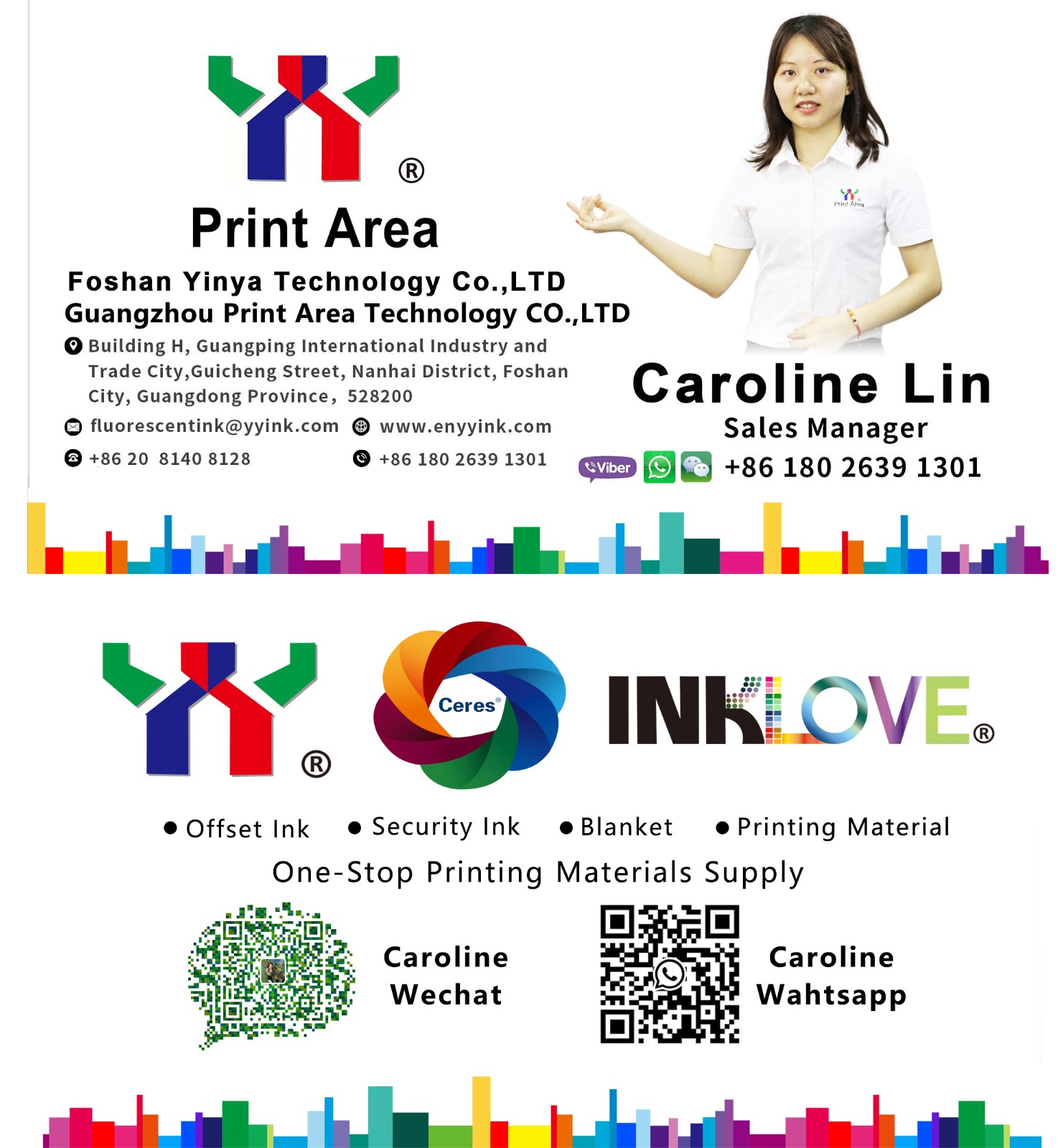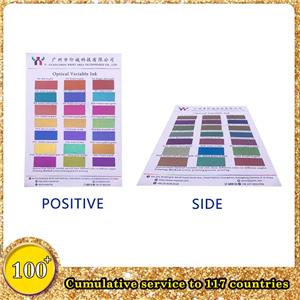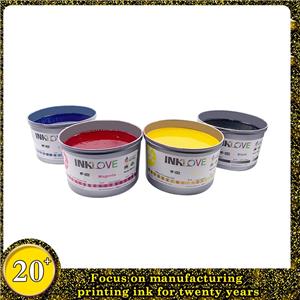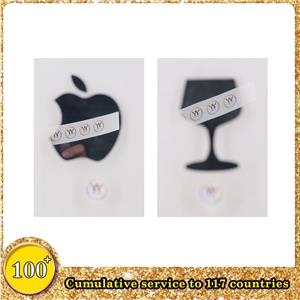Production Method of Optical Variable Ink
Optically variable inks were first used in the anti-counterfeiting printing of banknotes, checks, bonds and other securities. With the continuous development of science and technology, optically variable inks are not only used for anti-counterfeiting printing of trademarks, but also for surface decoration of special products. The reason why the optically variable ink has the corner-changing color characteristic is that a pigment with a very special structure is used, and its particles are very thin flakes with a good particle size distribution. The production process of the pigment is as follows: under high vacuum conditions, according to the design requirements of a specific film structure, a variety of materials with different refractive indices are sequentially deposited on the same carrier to form an optically variable film, and then undergo crushing, grading, surface treatment, etc. . When the thickness of the film layer meets the interference conditions of light, the film layer will show a photochromic effect, that is, its color will change as the viewing angle of the human eye changes.
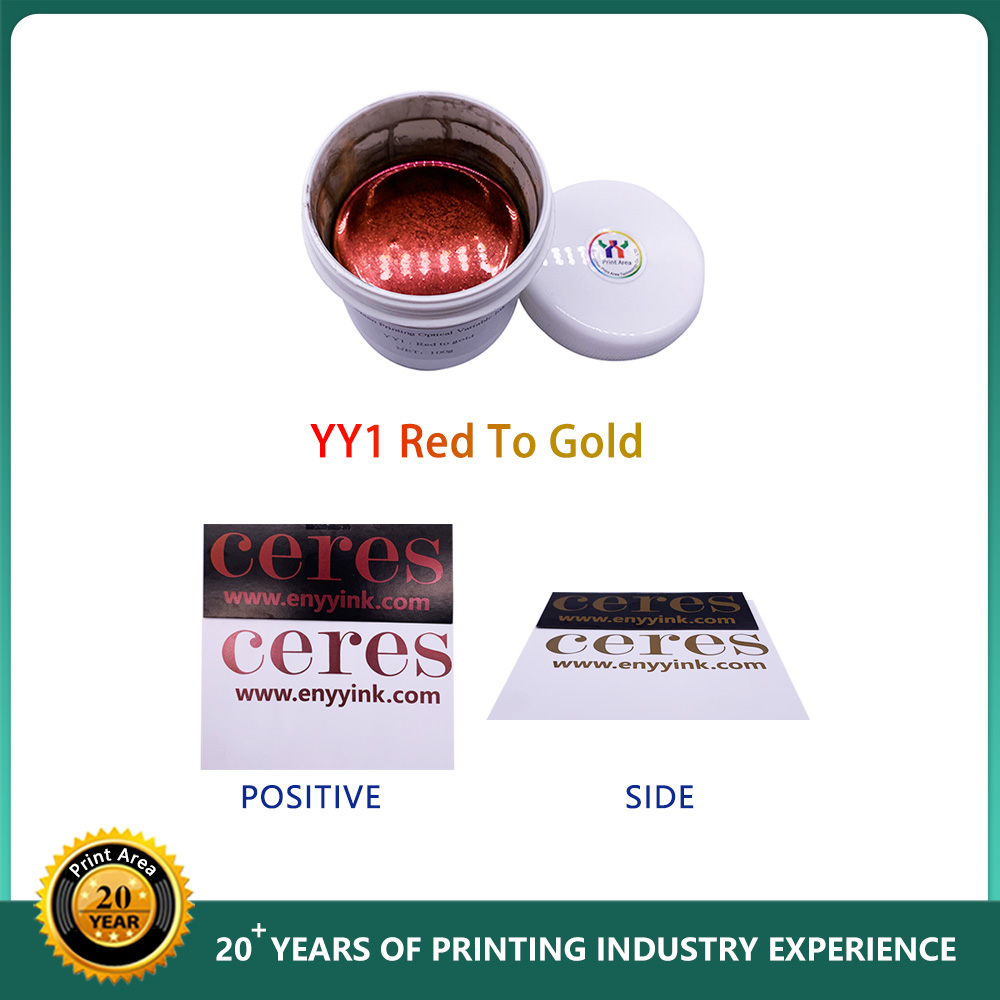
Manufacturing method
The manufacturing method of this kind of ink is generally to dissolve the photochromic pigment with a solvent to make a micropigment capsule, and add a binder to the dissolved pigment according to different purposes. A better manufacturing method is to dissolve photochromic pigments into overlapping monomers, pulverize such polymer ultrafine particles, and make powders for use as pigments. Compared with microcapsule inks, the inks made by this method are more light-resistant Sexuality increased by 10 times. These powders can be used as pigments in water-based inks, oil-based inks and plastic inks, as well as in all adhesives.
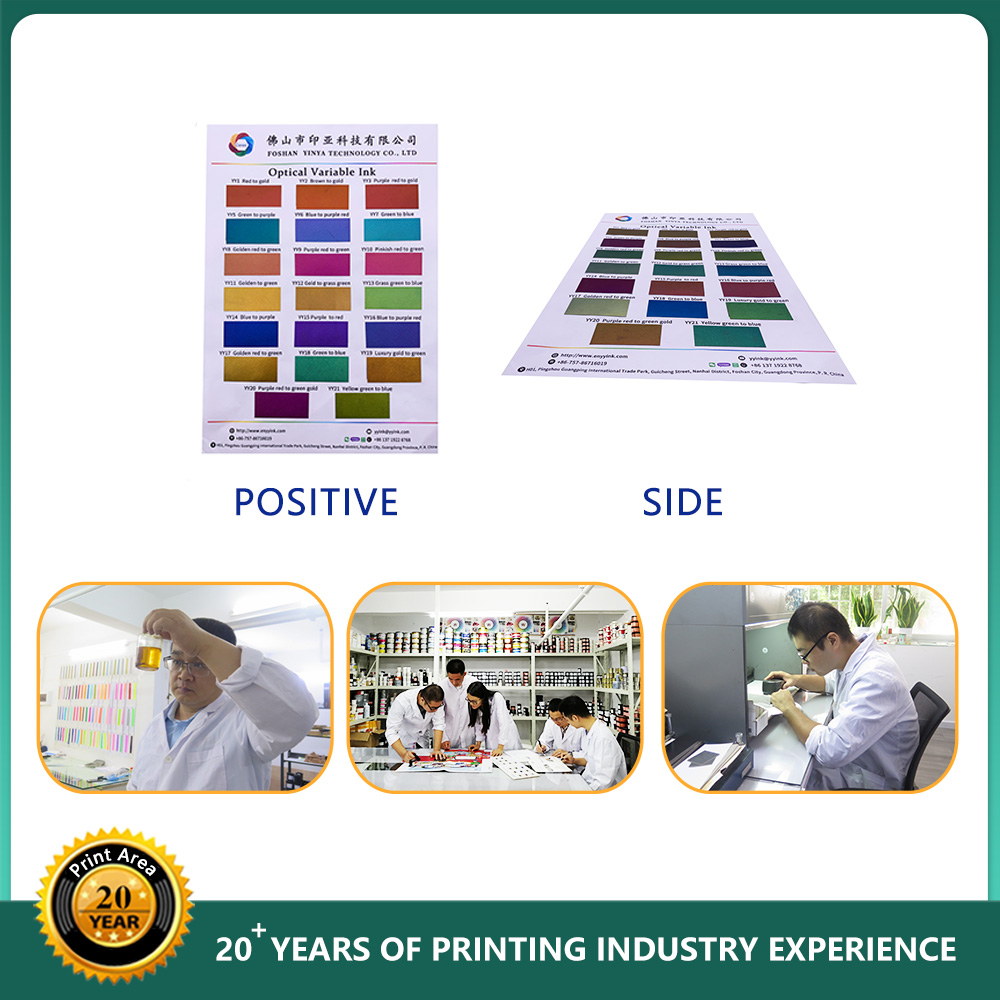
Product & Application:
Photochromic water-based screen printing ink
It takes the lead in the fiber product industry for its safe use and convenient operation. Use this water-based ink to screen-print with 80-120 meshes, dry at 100°C for 1 minute (preferably overnight drying), and then heat and bridging reaction at 130°C for 3 minutes to obtain excellent fiber adhesion. products.
The characteristics of this water-based ink are as follows:
Anti-counterfeit numbers printed with optically variable ink
*It can quickly develop color in the sun, and can return to a colorless state in a short time after shading (different colors have differences, yellow can be completed in an instant after 2 to 3 minutes);
* Dispersion performance, can get uniform color prints;
*Good color rendering and rubbing fastness;
*This water-based ink belongs to liquid ink;
* Good storage stability and easy operation.
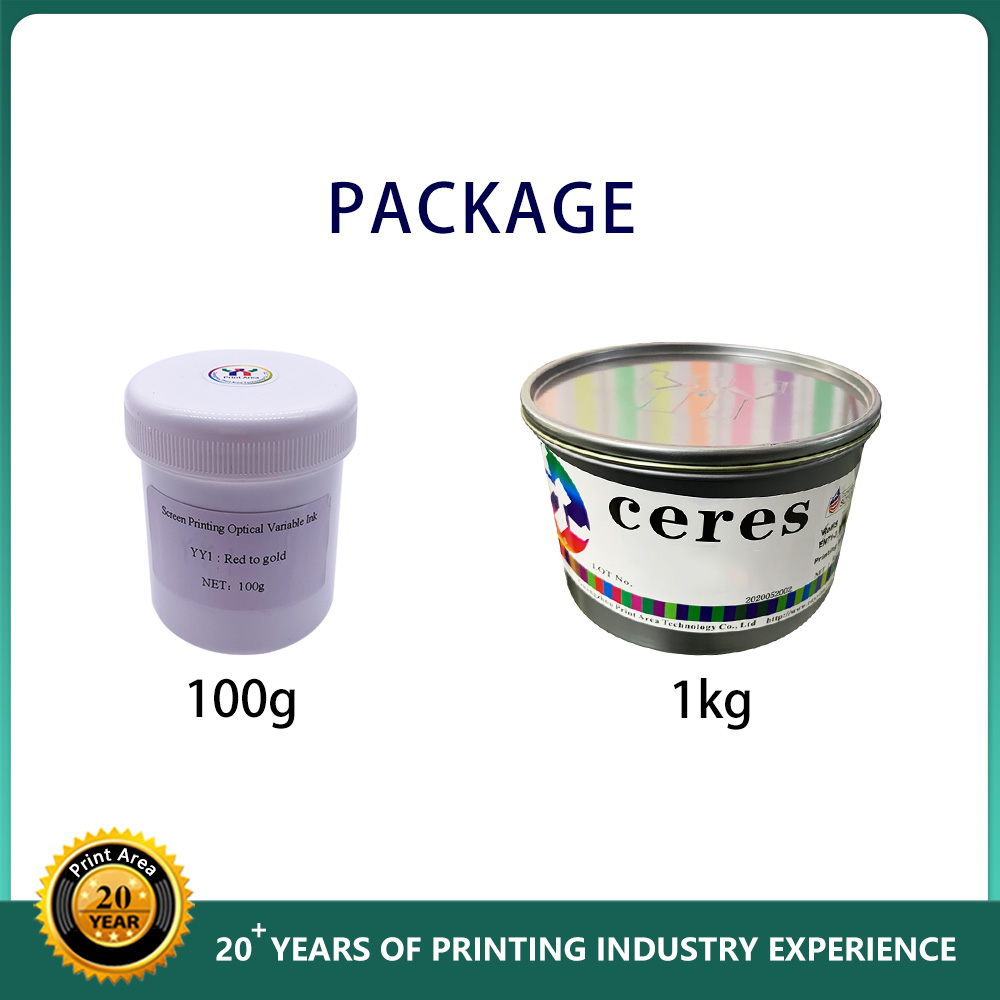
Photochromic oil-based ink
It is mainly used for surface printing of plastic films and metal plates. This ink is printed with a 100-200 mesh screen. There are many resins used for adhesives: acrylic, epoxy, urethane, silicone-modified resins, etc. As solvents, there are esters, ketones, etc., and others include mineral turpentine, petroleum, etc. Adding photochromic materials to these binders composed of resins and solvents can properly adjust the viscosity of screen printing inks to make oil-based screen printing inks.
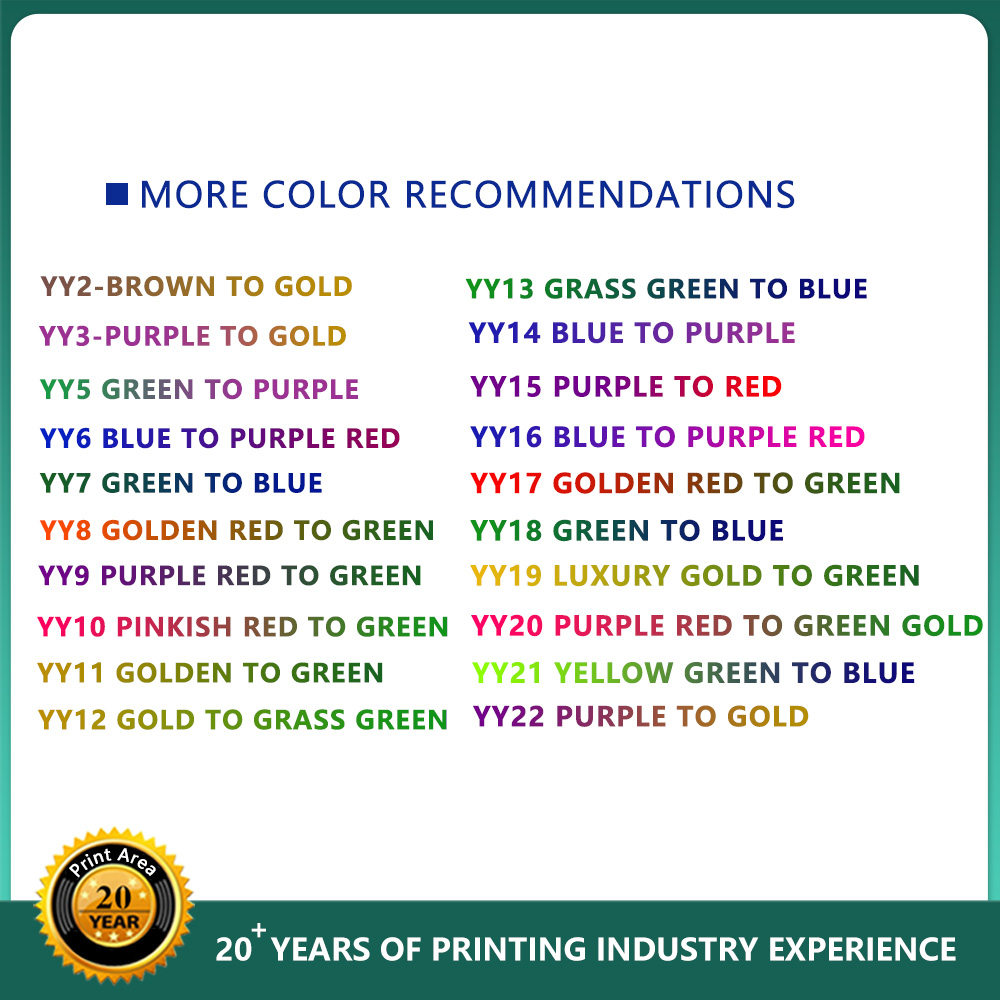
Photochromic plastic ink
According to the survey, there are very few printing manufacturers of plastisol screen printing inks used in Japan. However, in some countries such as the United States, especially the T-shirt production industry, this kind of printing ink is often used. Plastic ink, as a kind of ink that is not easy to dry, often does not need to clean the screen printing plate, and the ink remaining on the plate can also be used the next day. This kind of plastic ink is made of ultrafine powder of vinyl acetate copolymer with DOP plasticizer to expand the particles to make screen printing ink. Photochromic pigments can also be added to this plastic polymer to make screen printing ink. However, when the properties of the photochromic material itself are suppressed, the photochromic pigment itself is completely decomposed, and this phenomenon can only be manifested after several days. Therefore, it is difficult to use it as a commercial product.
But if the plastic resin does not use vinyl acetate copolymer, but uses a kind of ultrafine powder material that has the same characteristics and can control photochromic degeneration, it will be an ideal powdery photochromic plastic ink.
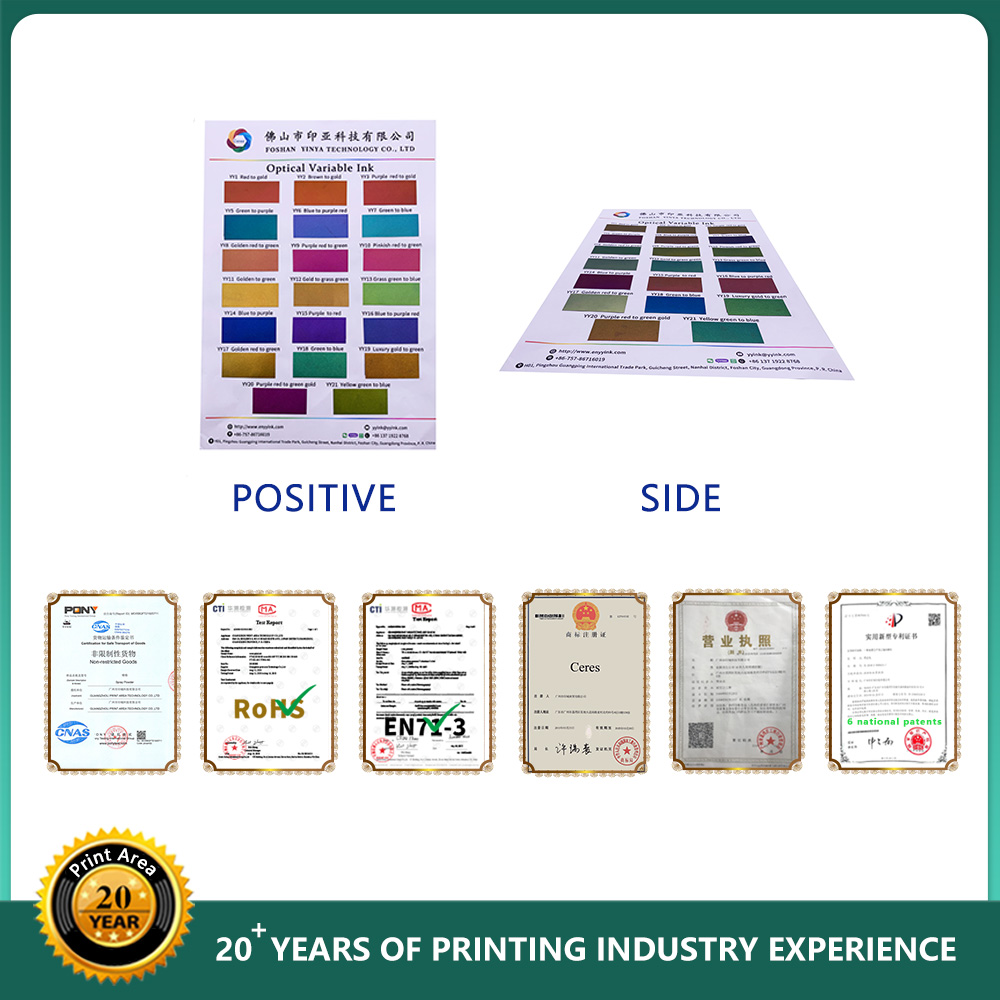
Interference ink
This kind of ink is the most complicated one among modern anti-counterfeiting inks, and it is a popular high-tech product. Optically variable ink is a reflective ink with pearlescent and metallic effects that cannot be reproduced by color copiers and electronic copiers. For products printed with optically variable ink, the ink color block presents a pair of colors. Such as magenta - blue, green - blue, cyan - green and so on. If the pattern is tilted to 60°, the pattern can be transferred from one color to another. Since significant color drift can only occur when the ink film on the printed matter is thick, its printing characteristics cannot be imitated by any other ink and printing method.
Print Area is professional in printing industry 20+ years.
Security Paper:Watermark Paper,UV Fiber Paper,Thread Paper
Security Ink:OVI,UV Invisible Ink,Magnetic Ink,Water Sensitive Ink,Watermark Ink,Glow in Dark Ink
Offset Ink:Soy Bean Offset Ink,UV Offset Ink
Printing Materials:PS Plate,Rubber Blanket,Underpacking Foil,Underpacking Paper.
Machine:Die Cutting Machine,Offset Machine,UV Flexo Machine,UV Coated Machine ect.
Please don’t wait and contact with
Caroline:+8618026391301(wechat & whatsapp avaliable.)
Email:fluorescentink@yyink.com
Web:www.printarea.cn
